Bond Abrasion Index VS Mohs Mineral Hardness Scale
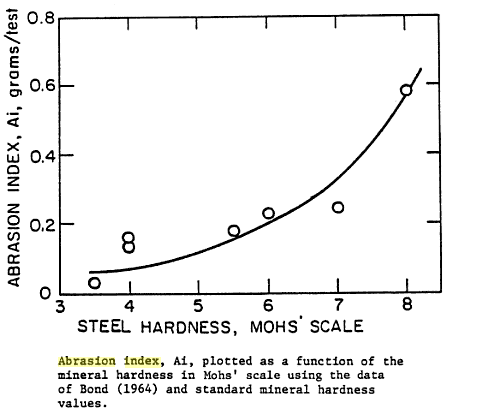
Here is an illustration of the typical relationship between the Mohs Mineral Hardness Scale and their corresponding Bond Abrasion Index. ref
How Abrasion Index affects Wear Rates
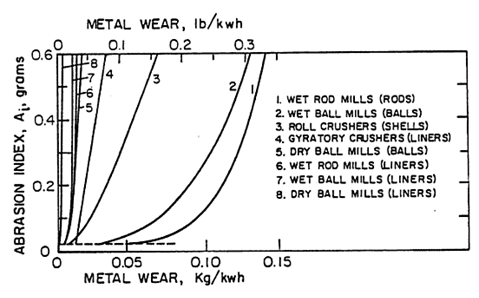
What is the relationship between Abrasion Index affects Wear Rates of steel ball mill and rod mill liners as well as the wear life or consumption of grinding balls or rods. A little bit of data on crusher (gyratory and roll) liner wear life in also shown. Rubber wear data.
Bond Abrasion Index VS Bond Work Index
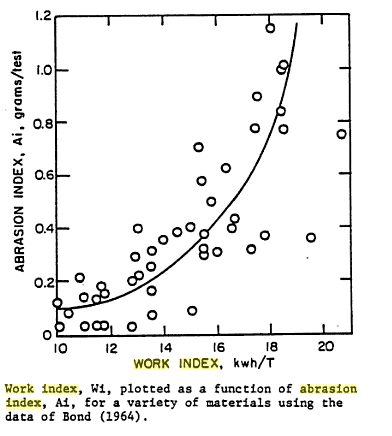
Compare and Understand Rod/Ball/Impact-Crushing/Abrasion BOND Work Index Ref
Pyrite Depression in Copper Flotation
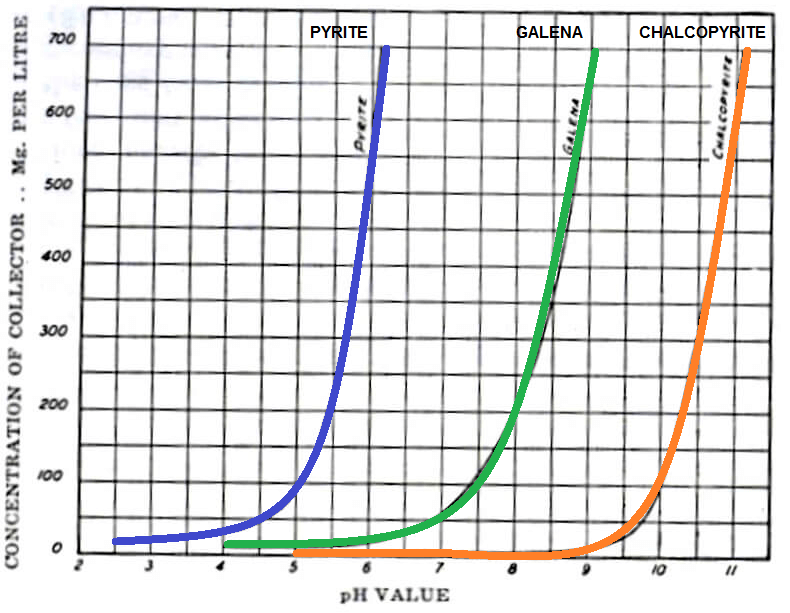
The Pyrite Depression in a Copper Only Flotation circuit is simple enough. If your froth flotation system only tries to recover chalcopyrite-copper, you need to bring the plant’s pH up to the other side (right side) of the PYRITE curve. The more flotation collector you have on, the higher you will need to increase that pH […]
Arsenic Determination/Assaying
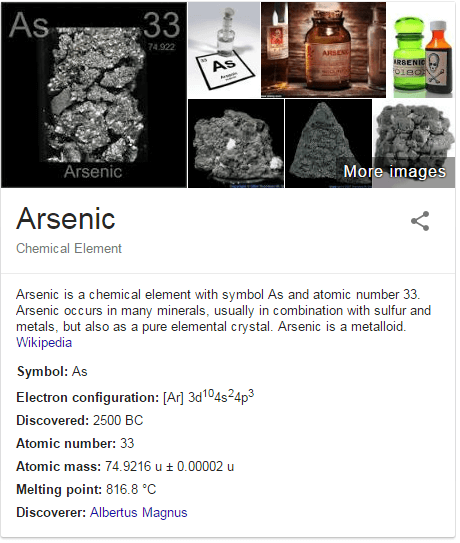
An assay method to measure arsenic using a MHS-10 and AA200 and Mercury Hydride System. Sample Preparation -Sample Weights to be used: Heads…………….. 0.3 g Cu Con……………..0.1 g Zn Con……………..0.2 g Knelson…………….0.3 g Core…………………0.1 g STANDARD MP-1a ……………0.1 g Cu Con Check Sample………..0.1 g Weigh the samples into 250 ml low form beakers. Add 10 mL Acid […]
Sodium Borohydride Make-up
Sodium Borohydride Solution Make-up Weigh 5 g of Sodium Borohydride and 2.5 g of KOH into a glass funnel inserted into 250 mL volumetric flask. Add distilled water to rinse the Sodium Borohydride / KOH into the flask. (If you are making a 10 g batch, dissolve the reagents in a beaker prior to transferring […]
Gravimetric Factors
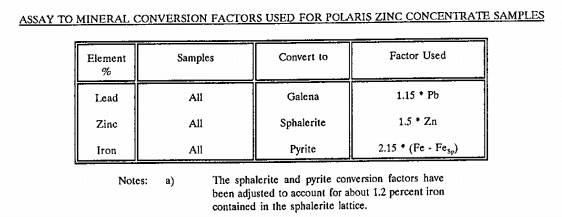
The factors used to convert metal assays to mineral assays in this MVT Mississippi Valley Type Deposits review is summarized below. The conversion factors are based on standard metal to mineral gravimetric factors with some minor adjustments to compensate for the interstitial iron contained in the sphalerite lattice. The measured value for interstitial or submicroscopic […]
Stereological Corrections
In reflected light mineralogical studies involving opaque minerals, it is possible to section a composite particle so that the particle appears to be liberated. Clearly, a binary particle may be sectioned to appear liberated but a liberated particle cannot be sectioned to appear locked. The probability of this former occurrence depends upon the relative amounts […]
Mineralogy of MVT Mississippi Valley Type Deposits
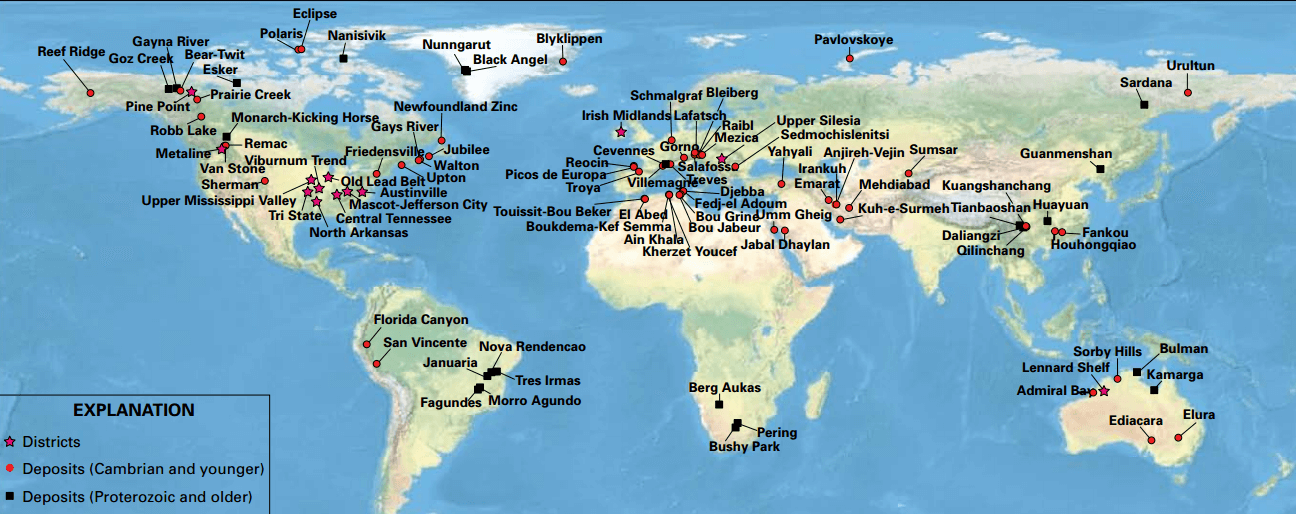
Where are the VMT A Mississippi Valley Type Deposit or commonly called VMT offers some of the simplest, cleanest and “easiest” mineralogy and therefore metallurgy in the world. As shown in the image below, a near perfect liberation of all minerals at 100 microns grind. As seen below, Mississippi Valley Type Deposits liberate very well as coarse […]
Estimated/Approximate Steel Liner Wear Life/Rate
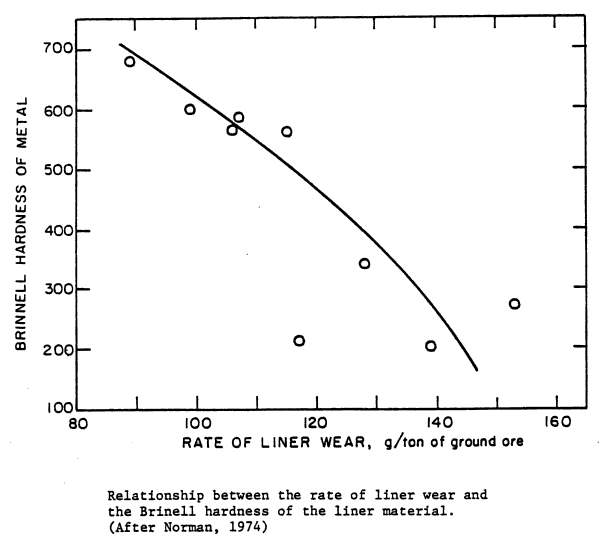
A mill’ steel liner wear rate and total useful operating life is a function of its hardness (mostly). Here is a chart displaying Liner Hardness on the Brinell Scale as a function of the tonnage of ore/rock milled/processed. Not showed here is the impact a mill’s RPM has on the liner’s wear rate. Comminution and Energy Consumption: By […]
